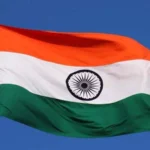Parsi Gara Embroidery: India boasts a rich history of traditional crafts, with an array of embroidery techniques, handiwork, and artistry. These crafts are a living testament to the country’s cultural diversity and heritage. While some of these traditions continue to flourish and be reimagined, others stand at risk of fading away. One such art is Parsi Gara embroidery, which holds a special place in the cultural heritage of the Parsi community of India.
From Persia to India: A Historical Journey
Parsi Gara, also known as Parsi Gara embroidery or Parsi Gara work, is a traditional embroidery style originating from the Parsi community in India. It is known for its intricate and highly detailed floral and nature-inspired designs. Typically, Parsi Gara embroidery is done on silk or georgette fabrics using colorful silk threads.
In the Parsi Gara embroidery technique, the motifs often include flowers, birds, butterflies, and other elements of nature, and they are meticulously stitched onto garments like saris, blouses, and dresses. This embroidery style is highly regarded for its craftsmanship and is considered a symbol of Parsi cultural heritage.
From Design to Creation: The Art of Parsi Gara

This rich craft traces its roots to the 19th century when Parsi traders and artisans migrated to India from Persia (modern-day Iran). When the Parsis first settled in Gujarat, Parsi men started trading with China. Initially, they went to buy tea from China and sell it in India. During the trade sojourns, they discovered a beautiful silk fabric called ‘gaaj’ or ‘paaj’. Such exquisite was its beauty that they ended up buying yards for their wives.
The Parsis brought the embroidery technique to India while trading with China. Soon, the embroidery style flourished in the textile centers of Mumbai and Surat.
Parsi Gara weavers shared that the design is first drawn on paper, followed by the formation of the sample color. The craftsmen study the designs and trace them on the sari. Making a Gara sari is an elaborate process, and it takes between two to eight months to complete one. A very fine needle is used to create these intricate motifs. An interesting aspect of the design is that each craftsman specializes in a particular motif. A Gara can be fully embroidered or have a border with partial embroidery.
Adorning Parsi Weddings and Challenges Faced

Parsi Gara embroidery is often associated with Parsi weddings, wherein brides may wear saris adorned with these exquisite embroideries. The name ‘Gara’ is derived from a Gujarati word for ‘sari’ or ‘wrapper’, reflecting its primary use in adorning saris.
Although the Parsi Gara embroidery continues to be treasured for its beauty and craftsmanship and serves as a reminder of the rich cultural heritage of the Parsi community and their ability to adapt and contribute to the diverse tapestry of Indian culture, there are significant challenges faced by the craftsmen.
With the diminishing demand for the craft, the children of these weavers are no longer interested or encouraged to carry forward the tradition of Parsi Gara embroidery. Additionally, the demand has diminished owing to the low birth rate of the Parsi community.
Preserving a Dying Craft
To revive this dying craft, an increase in demand and awareness is the key. “The higher the demand, the higher the supply, and we will be able to rescue it from extinction. The government can also help with the promotion of Parsi Gara in international quarters,” Gawade said.
Despite the challenges faced by Parsi Gara weavers, there is hope that through concerted efforts and support, this exquisite embroidery tradition can continue to thrive and be celebrated as an integral part of India’s cultural heritage.







